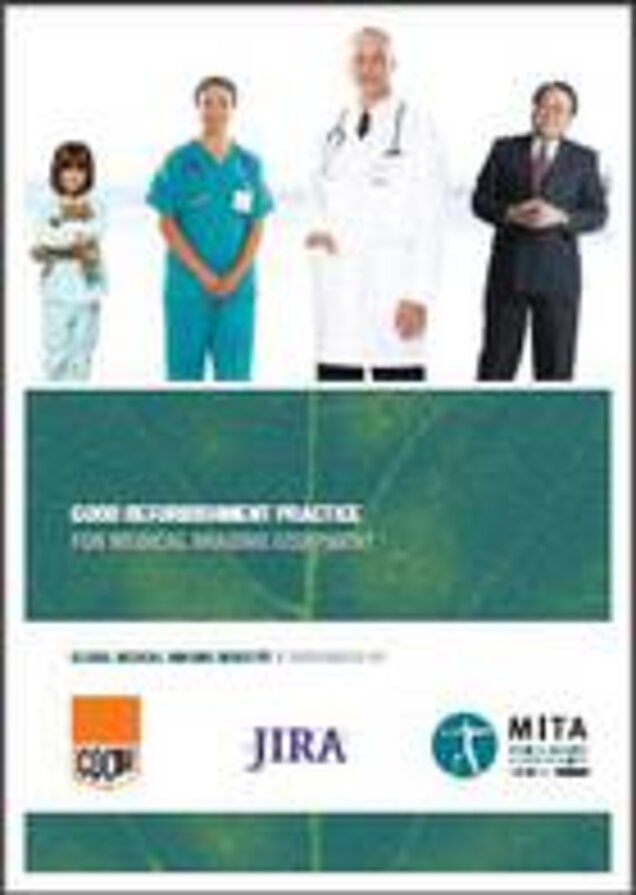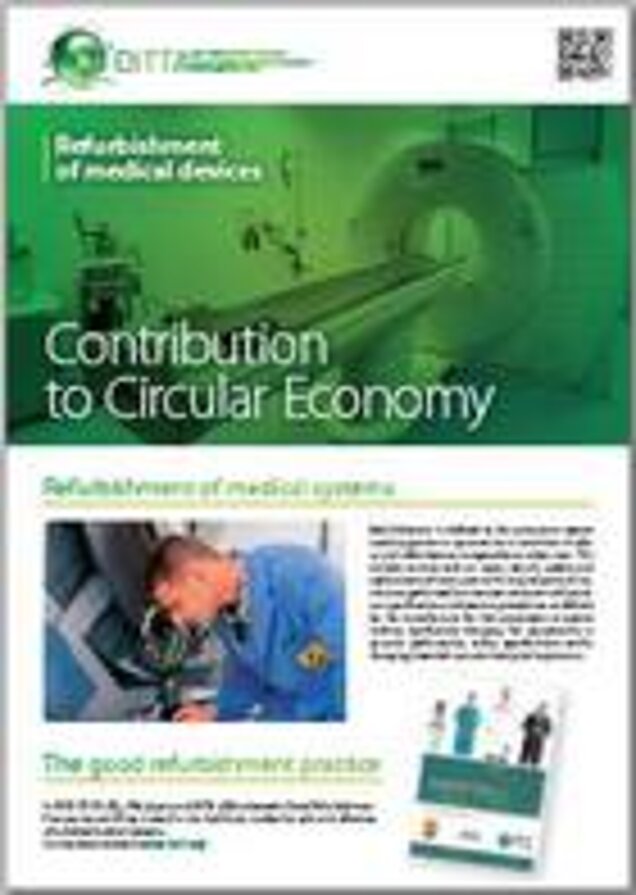Good Refurbishment Practice
Refurbishment is a systematic process bringing used equipment to the same condition as when new or even better. Such activity provides for important benefits both from an environmentaland social perspective. Beyond these important environemental benefits, the business that can develop around refurbishing used medical equipment creates a robust and sustainable economy in those countries where there is a generally accepted framework for processing such advanced equipment.
GOOD REFURBISHMENT PRACTICE
COCIR members considered in 2007 that there was a vacuum in establishing how to efficiently and safely refurbish medical equipment and thus COCIR established a focus group to establish commony golden rules. The Good Refurbishment Process was developed and a paper was published in 2007 which was shared among policy makers, regulators and other key stakeholders, later updated in 2009.
With the support of DITTA, the US medical imaging and technology alliance MITA managed to develop and publish the NEMA/MITA 1-2015 standard on “Good refurbishment practices for medical imaging equipment” in February 2016. (Link to NEMA/MITA 1-2015). DITTA (via MITA) collaborated with ANSI (American National Standards Institute) to file a request to the International Electrotechnical Commission (IEC) to publish the content of NEMA/MITA 1-2015 standard as an IEC PAS.
- In 2016, IEC published IEC PAS 63077 on “Good refurbishment practices for medical imaging equipment” – content wise identical to NEMA/MITA 1-2015.
- In 2018 and 2019, IEC SC62B WG53 has been finalizing the standard by developing it from a Publicly Available Specification (PAS) to an international standard IEC 63077.
IEC 63077 ED1 Good refurbishment practice of medical imaging equipment
IEC 63077 describes and defines the process of refurbishment of used medical imaging equipment and applies to the restoring of used medical imaging equipment to a condition of safety and performance comparable to that of new medical imaging equipment without significantly changing the equipment’s performance, safety specification and/or intended use as in its original registration.
IEC 63077 ED1 has been published by the International Electrotechnical Commission in November 2019. The standardization document is available for purchase via the IEC website. (Link to IEC website)
Benefits of refurbished medical imaging equipment
Refurbishment of medical imaging equipment has benefits for the environment, the economy as well as patients, hospitals and society.
- Environment: Refurbishment in the medical imaging equipment industry also makes a positive contribution to the environment as it reduces waste generation and saves energy, resources, and raw materials. It is therefore considered a “Circular Economy” business. DITTA estimates that around 30 MWh can be saved for each ton of refurbished medical imaging equipment. In the context of waste prevention, DITTA estimates that in 2012 around 16,400 tons of used medical equipment were prevented from becoming waste; instead they were considered for refurbishment and repair. In addition, refurbishment of medical imaging equipment saves resources and ensures their supply, including scarce raw materials that are needed for the manufacturing of some unique properties of medical equipment.
- Economy: Refurbishment of medical imaging equipment is an established practice in the medical imaging equipment industry since more than two decades: it accounted for global revenue of approximately 523 million € in 2020 (DITTA estimation). Approximately 80% of all refurbished medical imaging equipment are sold in the U.S. (60%) and the European Union (19%).
- Patients, hospitals and society: Refurbished medical imaging equipment makes a positive contribution to increased access to affordable and high-quality healthcare as they can be offered at a lower price than the comparable new ones. In current times of constrained budgets, refurbished medical imaging equipment helps hospitals and medical centers with budget restrictions to purchase high-quality equipment and replace their used equipment. The cost savings in comparison to a new medical imaging equipment vary depending on the product and its configurability, the refurbisher and the country. By replacing used, outdated equipment with refurbished medical imaging equipment, the overall quality of healthcare for patients can be improved, e.g. by providing better diagnosis, which allows for better therapy and increasing chance of survival.
DITTA Refurbishment of medical devices: Contribution to Circular Economy
In 2015, DITTA published a brochure highlighting the contribution of refurbishment of medical imaging equipment to the circular economy and sustainability. The brochure is available for download in English, Spanish, Chinese, Japanese and French.


